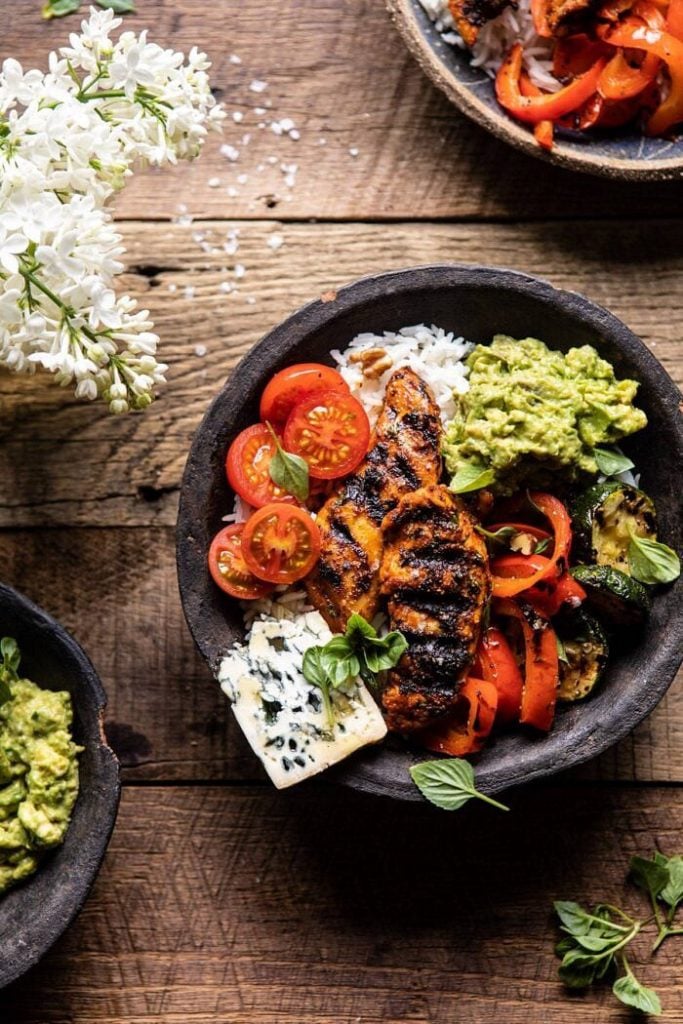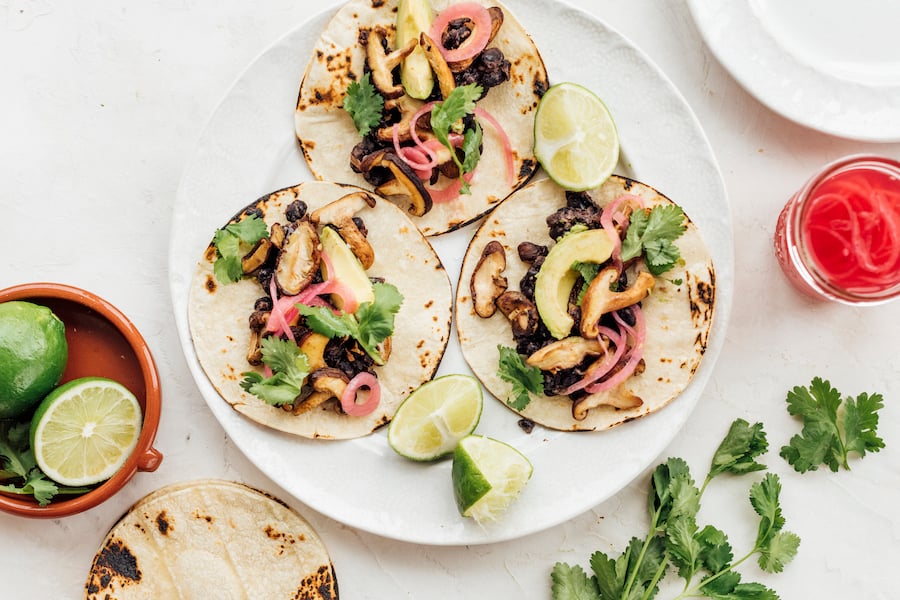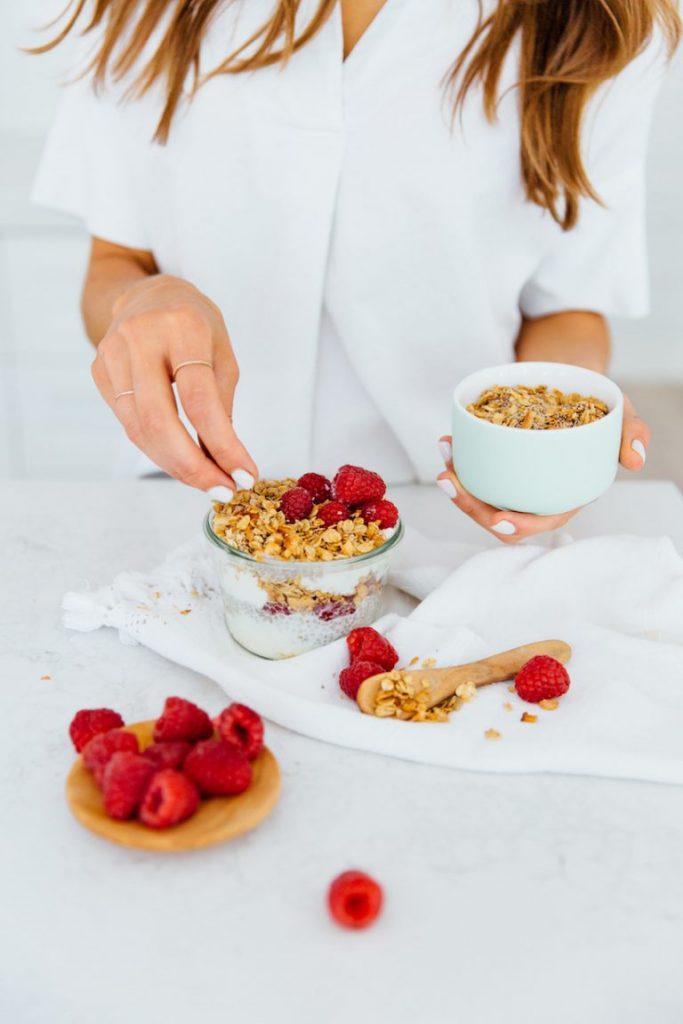First off, I’m not one to demonize certain foods. What begins as an honest attempt to live healthier can turn into a rigid set of food rules and restrictions. It can cause a slew of unhealthy behaviors. Been there, done that. Here at CS, we prefer to take a balanced approach. Most of the time, we reach for real, whole foods—like colorful produce and hearty grains. After all, these make us feel energized and nourished on a cellular level. However, there is also room for food that purely feeds the soul. Those dishes that bring us joy, community, connection, and culture. These brownies? A perfect example of that. While today’s article is centered on foods to ditch, remember it’s not all or nothing. Rather, it’s about accepting that certain ingredients might not make you feel your best. And at the end of the day, the point is to find joy in eating and being well—a lifestyle that lasts.

What Is Real Food?
Before diving into ingredients that can wreak havoc on your gut and hormones, let’s talk about the power of eating real, whole foods. Forget old-school and outdated rules, like low-fat this and low-calorie that. Instead, learn the difference between diet food (that’s marketed to us as healthy!) and what is actual, real food.
In essence, it’s food in its most natural state. It’s natural, simple, and comes from the earth—or eat what grows on the earth. These foods have existed for thousands of years, nourishing our ancestors. To this day, these foods are relatively in the same form. They’re often one-word foods or have labels that list a handful of ingredients (all of which are easy to read). In terms of what isn’t real food, it’s essentially everything else. It’s processed food, diet food, etc. When you look at the ingredient list, it has words you can’t pronounce and reads a mile long.
The Benefits of Eating Real Food
The truth is, processed foods with long ingredient lists are packed with additives, preservatives, sugar, and industrial seed oils. These are inflammatory to the body. In other words, they’re hard for your body to digest and assimilate. Keeping it simple, on the other hand, is kind to your body. The benefits are a dime a dozen, but eating real food means you’re getting important vitamins and minerals, fiber, and at least one macronutrient (carbs, protein, and healthy fats). Eating real food can also help curb sugar cravings, aid in satiation, and help balance blood sugar. Best of all, it doesn’t have to break the bank.
8 Processed Food Swaps
Curious to know a few of my favorite processed food swaps? From savory to sweet, these brands know how to make your favorite snack foods taste delicious, without artificial ingredients:
| Swap This… | …For This |
| Wheat Thins | Simple Mills Crackers |
| Cheeze-Its | Annie’s Cheddar Squares |
| Oreos | Catalina Crunch Sandwich Cookies |
| Betty Crocker Cake Mix | Cherrybrook Kitchen Baking Mix |
| Fruit Loops | Love Grown Kids Cereal |
| Clif Bar | GoMacro Bars |
| Orville Redenbacher’s Classic Popcorn | LesserEvil Popcorn |
| Coke | Olipop Vintage Cola |
How to “Crowd Out” Unhealthy Foods
If you can’t imagine the thought of giving up your favorite foods, I hear you. As mentioned, this isn’t all-or-nothing. However, one way to start eating more real, whole foods, is this: Increase the portion of healthy foods you eat—while continuing to eat some of your favorite processed foods—but in smaller portions. When you fill up on fruits, vegetables, whole grains, high-quality protein, and water, your cravings for junk foods will slowly subside. Not to mention, when you’re satisfied and full-on, fiber-rich produce and grains, you tend to snack less. This concept is known as “crowding in” healthy foods and “crowding out” junk foods. It’s an approach to healthy eating that focuses on adding in nutritious foods and naturally crowding out less nourishing options.
Eliminating and Reintroducing Certain Foods
When it comes to foods to ditch, this is bio-individual. It comes down to the way your unique body processes these foods. For example, you may find that gluten doesn’t affect your digestive system, skin, hormones, and energy. But maybe it does. Therefore, it’s best to experiment. Remove the food for anywhere from 3-4 days to 3-4 weeks to see how you feel. You may notice an immediate difference. When you reintroduce that food, take note. Keep in mind that quality matters. For example, there are a million different types of packaged bread on the market. When you introduce gluten, see if you notice a difference in how you digest a sprouted grain bread (like Ezekiel bread), versus bakery sourdough, versus packaged bread, like Oroweat. Also, the amount of that food can make a difference. Again, this will require experimentation.
Considering an elimination diet? Work with a Functional Medicine doctor or Integrative Nutritionist who specializes in elimination diets and gut healing. An elimination diet should be closely monitored and supported by a holistic healthcare practitioner. Reach out to me! I can help.
10 Foods to Ditch
Without further ado, below are 10 common foods that cause blood sugar issues, insulin spikes, and/or inflammation in the body. However, take all of these with a grain of salt. You may be able to digest them just fine! We are all bio-individuals with unique nutritional needs.
High-Fructose Corn Syrup
High-fructose corn syrup, also known as HFCS, is a sweetener made from corn starch. Many experts believe that added sugar and HFCS are key factors in today’s obesity epidemic. In essence, HFCS (and table sugar) contain fructose and glucose. Your body metabolizes fructose differently than glucose, and consuming too much fructose can lead to health problems. It increases your risk of fatty liver disease, an excessive intake is linked to diabetes, and it contains no essential nutrients. Instead, swap HFCS for stevia, monk fruit, xylitol, yacon syrup, maple syrup, or honey.
Artificial Sugars
Speaking of sugar, artificial sugars are made from chemicals that do more harm than good. In fact, animal studies have convincingly proven that artificial sweeteners cause weight gain, brain tumors, bladder cancer, and many other health hazards. A few examples are aspartame (NutraSweet, Equal, etc.), sucralose, maltitol, maltodextrin, and saccharin (Sweet-n-Low). All of these can increase blood glucose/insulin levels, cause indigestion and weight gain, spark allergies, decrease beneficial bacteria in the gut, and more. Ultimately, they provide no nutritional value. My favorite swaps are honey, stevia, monk fruit, and xylitol.


Artificial Trans Fats
Artificial trans fats are amongst the top foods to ditch. They’re easily the unhealthiest fats you can eat. They’re created by adding hydrogen to unsaturated fats, which are liquid, to give them the stability of more solid fat. On ingredient labels, trans fats are often listed as partially hydrogenated oils. Most margarine contains trans fats, and they are often added to processed foods to extend shelf life. Unlike the naturally occurring trans fats found in dairy and meat, artificial trans fats have been shown to cause inflammation and increase disease risk. Healthy swaps include ghee, avocado oil, olive oil, and coconut oil.
GMO Corn
Did you know that 85% of the corn produced in the United States is genetically modified (according to the Center for Food Safety)? To produce a genetically modified organism—or GMO—scientists take genes from one plant or animal and insert them into the DNA of another. This technology produces crops that grow faster, larger, and are more resistant to herbicides and disease. It possesses its own built-in pesticide, called Bt. When insects ingest GMO corn, the Bt contained in the corn kills the pests.
Although this built-in toxin offers a significant advantage to farmers because it eliminates the need to spray crops with pesticides, it also means humans are consuming Bt with every bite of corn. In turn, GMO corn can cause an immune response in humans. When possible, opt for organic corn or choose tortilla chips made from beans (I love Beanitos) and tortillas made from an alternative flour (like Siete).
GMO Soy
Much like GMO corn, GMO soy is a hot topic for debate. Research shows it may contain fewer nutrients and more herbicide residues than conventional soy. Currently, 81% of the global soybean crop is genetically modified, and most of it ends up in farmed animal feed. The GMO soy consumed by farmed animals is utilized as a source of protein. It doesn’t magically evaporate. Instead, it ends up on your plate. Therefore, be mindful of buying conventional meat. At any rate, GMO soybeans contain compounds that may lower the body’s ability to absorb the vitamins and minerals they contain. When possible, consume organic soy and aim for minimally processed soy, like organic edamame and tempeh (fermented soy).
Industrial Seed Oils
Like sugar and trans fats, experts are aware of several dietary culprits that explain rapidly rising rates of chronic disease. One commonly consumed food that receives little attention? Industrial seed oils. Industrial seed oils are highly processed. They’re extracted from soybeans, corn, rapeseed, cottonseed, and safflower seeds. Unlike healthy fats, these seed oils raise our omega-6-to-omega-3 fatty acid ratio, oxidize easily, and contain harmful additives. Almost always, they’re derived from GMOs. And when they are repeatedly heated, they are even more toxic. Stick with healthy fats, instead! A few of my favorites are olive oil (great for salads), avocado oil (ideal for roasting), and coconut oil (delicious for sautéing).
Processed Meat
When it comes to limiting foods that cause inflammation, look no further than conventionally-raised animals that are turned into processed meat. Think: Bacon, hot dogs, and ham. Unfortunately, ultra-processed foods, like conventional hot dogs, have been associated with higher blood levels of inflammatory markers, like CRP (which cause chronic inflammation). More so, frequently eating processed meat is associated with an increased risk of many chronic diseases, like high blood pressure and heart disease. When in doubt, choose lean cuts of organic deli meat, opt for pasture-raised bacon, and skim the ingredient list for added sugars. If you’re looking for a new sausage brand, one of my new favorites is Seemore (they’re loaded with veggies, too!).
Sugar-Sweetened Beverages
In addition to blood sugar spikes from food, sodas do the same. They’re high in carbs without providing other essential nutrients, like fiber. They’re loaded with fructose. And fructose is linked to insulin resistance, metabolic changes, and diabetes. Furthermore, soda doesn’t aid in fullness. Due to fructose, it does not lower the hunger hormone, ghrelin, or stimulate fullness in the same way as glucose (the sugar found in sweet potatoes, for example). Ultimately, sugary soda contains no helpful nutrients. Need your soda fix? Try Poppi, Olipop, or Zevia.
Fruit-Flavored Yogurt
That strawberry swirl fruit-on-the-bottom or chocolate chip crunch topping in your yogurt? It often packs a sugary punch. In fact, some flavored yogurts contain more sugar in one serving than some candy bars. Plain, organic yogurt contains gut-promoting live bacteria, but when sugary jams and “fruit” are added, you’re also consuming table sugar and other processed ingredients Healthy flavored yogurt, on the other hand, contains minimal added sugar, no carrageenan, avoids preservatives, and does not contain highly processed gums or thickeners. When in doubt, choose plain, whole milk yogurt (or Greek yogurt). My favorite flavored yogurt brands are Siggi’s, Wallaby, and Maple Hill.
Agave Nectar
While agave nectar may seem like a healthier option than cane sugar, consider this: Because agave syrup is much higher in fructose than plain sugar, it has greater potential to cause adverse health effects, such as increased belly fat and fatty liver disease. Your body is well equipped to handle the small amounts of fructose found in fruit, but agave nectar is a different story. In essence, agave nectar isn’t a healthful alternative to table sugar. As it turns out, agave has a higher fructose content than any other common sweetener (more than HFCS!). Because of its reputation as a “natural” sweetener, it is now widely used in products claiming to be good for health. Stick to maple syrup or honey. For an even lower glycemic option, liquid stevia or monk fruit.











